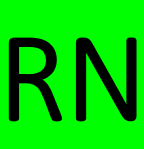Another equity type that we only recently started buying are “Baby Bonds” or “Exchange Traded Debt” (ETD). Baby bonds are fixed income securities like traditional bonds, but have smaller denominations: i.e. $25 instead of the usual $1,000. Baby bonds also have features like a common stock or preferred stock. For example, we can generally purchase baby bonds on an exchange by ticker symbol rather than the more obscure CUSIP. Compare the following:
- A traditional bond CUSIP that we own: 36162JAB2
- A baby bond that we own: RILYG
Gentlemen prefer bonds
Andrew Mellon
I’m not sure that gentlemen really prefer bonds. We only have one traditional bond in our portfolio, and this is partly because they can be a pain in the ass (PITA) to purchase. I’ve tried to buy a few others, but I was not able to purchase online through Schwab or Fidelity, even though I had the CUSIP. I would have had to call the bond desk, and decided to just buy something else rather than have to talk to someone. 🙂
The lower prices for baby bonds and the fact that they are traded on an exchange makes them more accessible than traditional bonds. They are available for individual investors and easier to buy and sell, but note that there may be high bid and ask spreads. It’s a best practice to use a limit order, but particularly for more thinly traded investments like these.
Baby bonds are a step lower than traditional bonds in the capital structure, but higher than preferred and common stock. The payments are interest and taxed as ordinary income. Finally, baby bonds are often callable, so investors need to be aware of the call risk. There is also default risk, especially for smaller companies, so like anything else we need to do our due dilligence!
As a way to “juice” our passive income, baby bonds can be a great component. Since there is no tax advantage to the distributions, we have purchased them in tax sheltered accounts. Here is a chart of RILYG that we own in one of our Roth IRAs:

Like most other charts from the last couple of years, we see the giant dip from COVID-19, but we can also see that the beta is low outside of this anomaly. RILYG has a par of $25 and pays $1.81 annually for a 7.25% nominal yield. It’s trading slightly above $25 for a current yield of 7.18% and has been callable since 12/31/2020. The fact that it’s callable has kept the price in this range and we are good to collect the payments for now.
How has RILYG performed for us?
RILYG Purchases
| Date | Desc | Amount |
|---|---|---|
| 6/19/2019 | Bought 50 | $25.15/share |
| 7/18/2019 | Bought 50 | $25.17/share |
| 4/14/2020 | Bought 50 | $20.00/share |
| 4/23/2021 | Current Price | $25.24/share |
| 4/23/2021 | Average Price | $23.44/share |
| Totals Cost | 150 Shares | $3,516.00 |
| Current Value | 150 Shares | $3,786.00 |
| Gain/Loss | $270.00 |
RILYG Interest
| Date | Amount |
|---|---|
| 7/31/2019 | $22.66 |
| 10/31/2019 | $45.31 |
| 1/31/2020 | $45.31 |
| 4/30/2020 | $45.31 |
| 7/31/2020 | $67.97 |
| 10/31/2020 | $67.97 |
| 1/31/2020 | $67.97 |
| Totals | $317.19 |
So the total return from capital gain and interest as of 4/23/2021 is $587.19 or about 16% of our total cost basis. We averaged down in April 2020, but weren’t “brave” enough when it was in the low teens. It’s easy to look back now, but those were definitely scary times with a high “pucker” factor!
As we transition to a focus on income and capital preservation, note that the return from interest payments alone has been decent. As we build more positions with our targeted high single digits of yield, we can see how we can get closer to replacing our “employment” income with “passive” income. RILYG may get called so we will need to find another quality baby bond to replace it, which is where the High Dividend Opportunities service on Seeking Alpha, is invaluable to help us find suitable replacements. As the World continues to recover financially from COVID-19, we will also need to consider how the markets behave when inflation comes back into play. As rates rise, fixed income investments may be impacted and we may need some hedges with variable rate options.
Subscribe to get email updates when we post new content and please discuss further in the comments below or let me know if you have any questions or other feedback.
| Disclaimer: I am not a financial planner and content on this site is meant to provide food for thought, not professional advice. I share my experiences to show what worked so far and what didn’t, YMMV. Please consult your financial advisor or tax professional as needed. |


